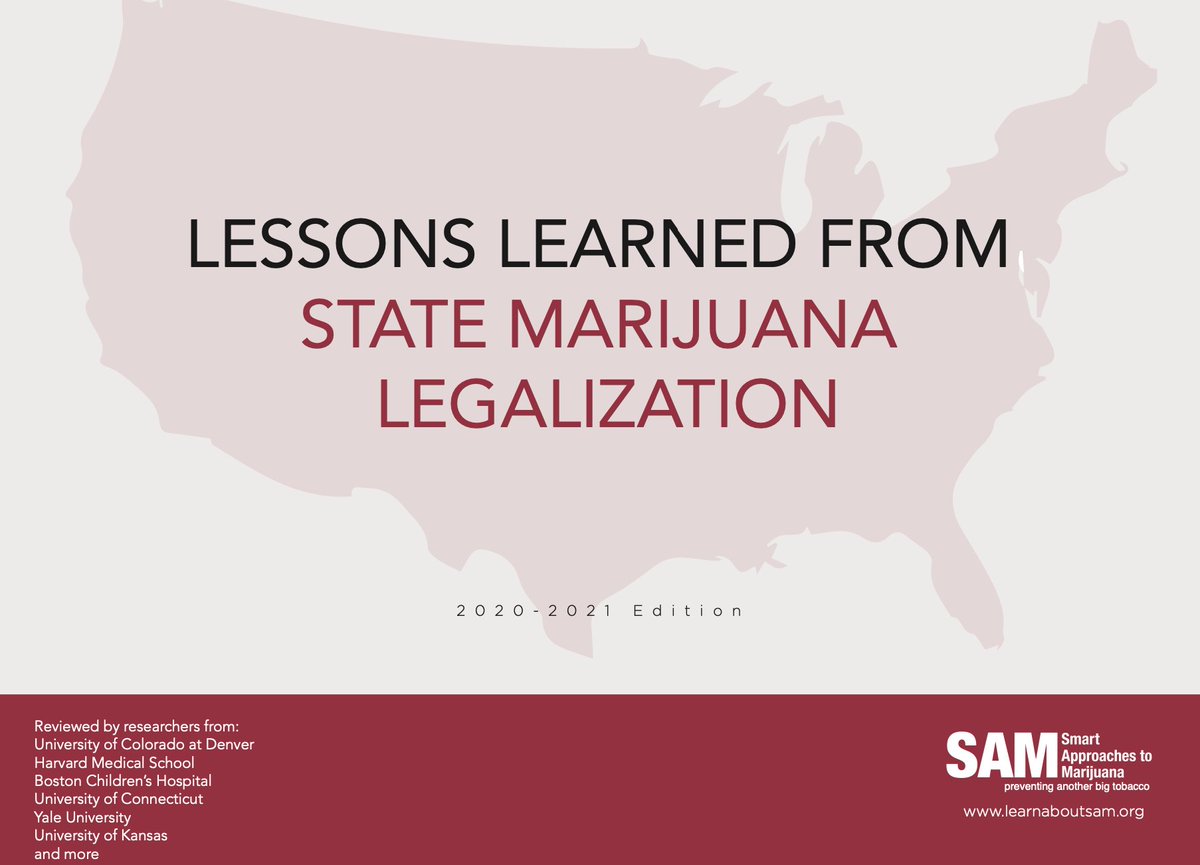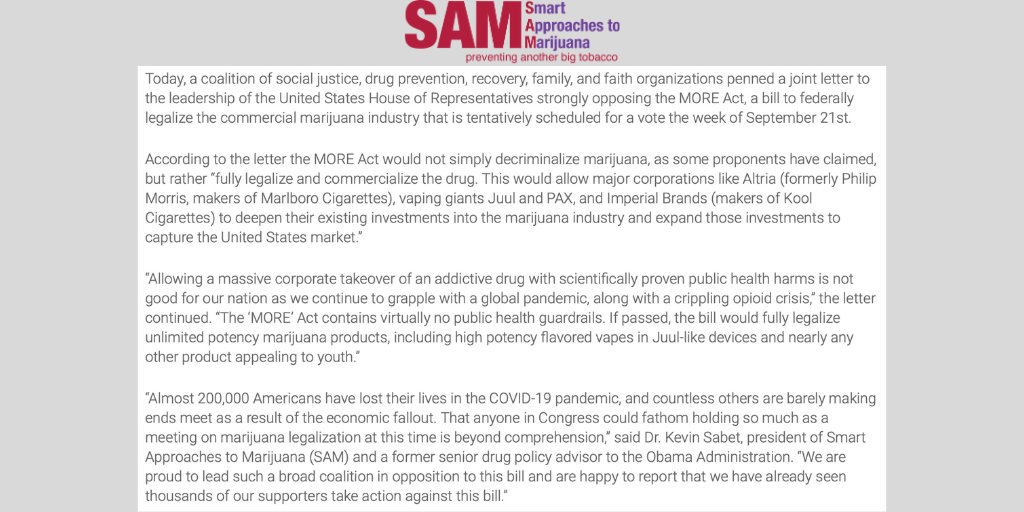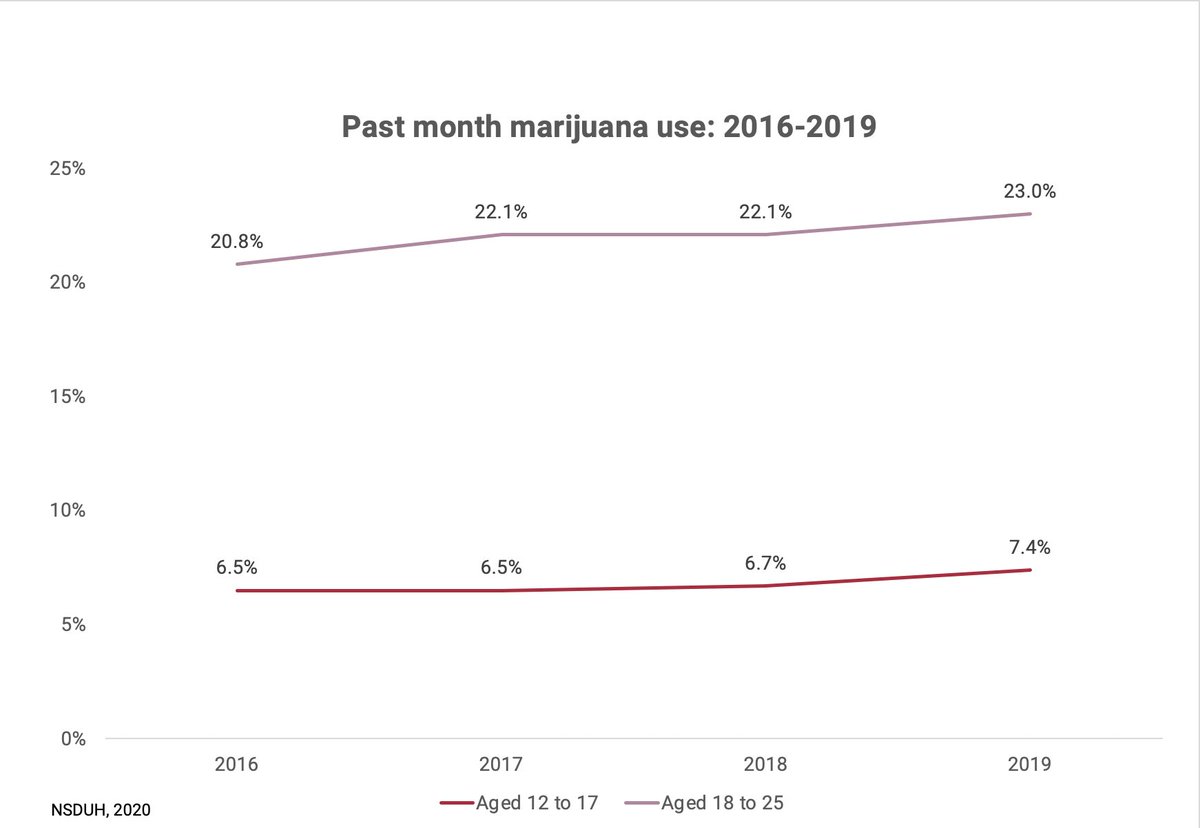Today, SAM officials will testify in Connecticut on the cost of legalization and how the pot industry is aiming to put #peoplebeforeprofits
Recently, SAM released a comprehensive report on the projected costs of legalization in Connecticut. The report can be found here 🔽🔽🔽
learnaboutsam.org/wp-content/upl…
learnaboutsam.org/wp-content/upl…
Marijuana legalization will cost the state $216 million, which is far more than the projected tax revenue of $113.6 million. 

Additional costs of marijuana legalization in Colorado and Washington have been identified, but data are insufficient to be able to quantify them. These include controlling an expanded black market, use by minors and public intoxication.
New data from Oregon shows that 70% of pot-market activity is illegal…more than two of every three transactions are not legal.
As consumption among minors has risen, so too has the need to enforce the law surrounding underage possession and use. In the two years following legalization in Colorado, the number of minors arrested for pot increased 5%.
Even using the conservative scenario in the above study, and not factoring in hard to quantify data, the costs associated with legalizing pot will far outweigh any associated revenue estimates.
• • •
Missing some Tweet in this thread? You can try to
force a refresh












